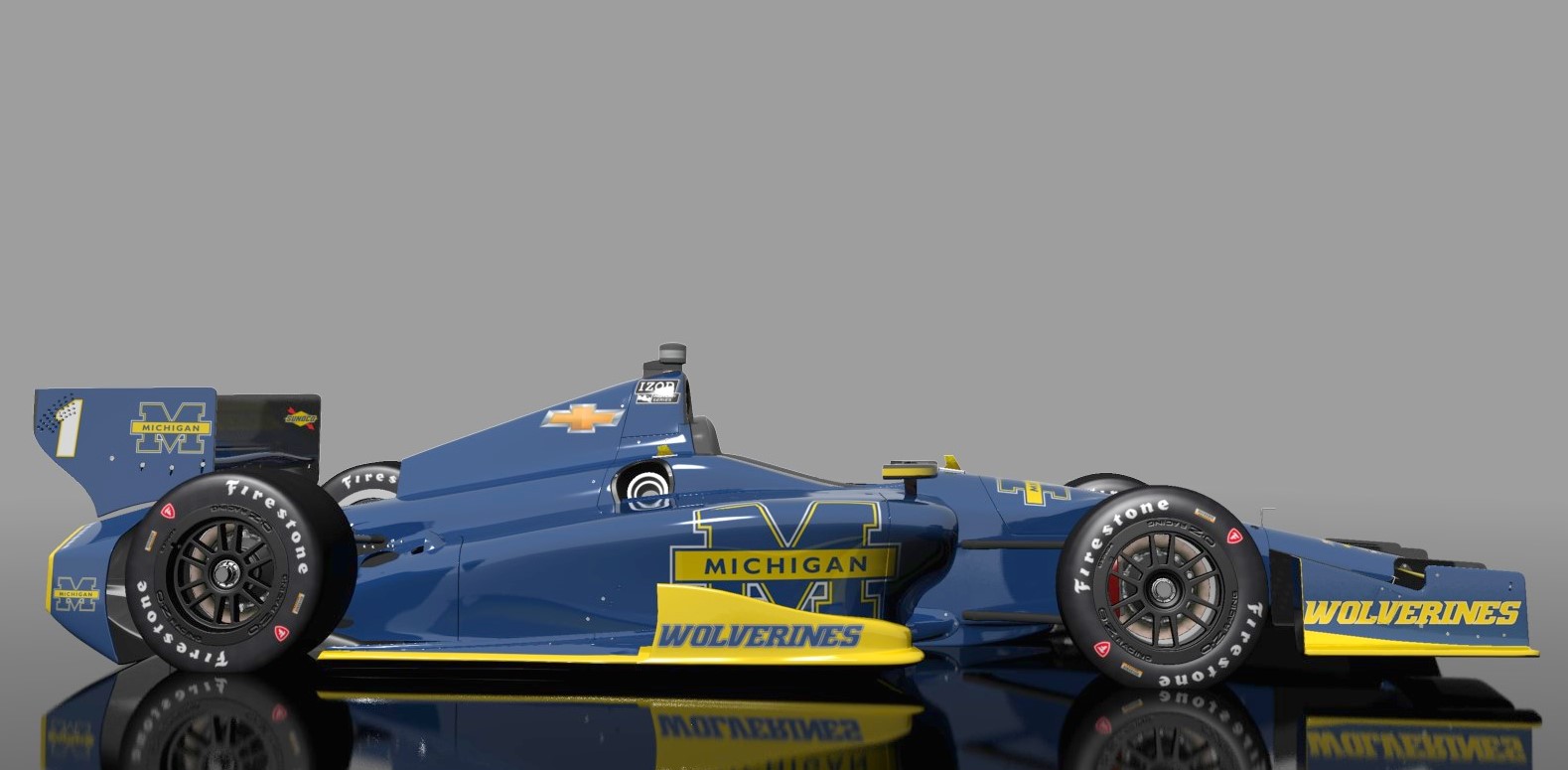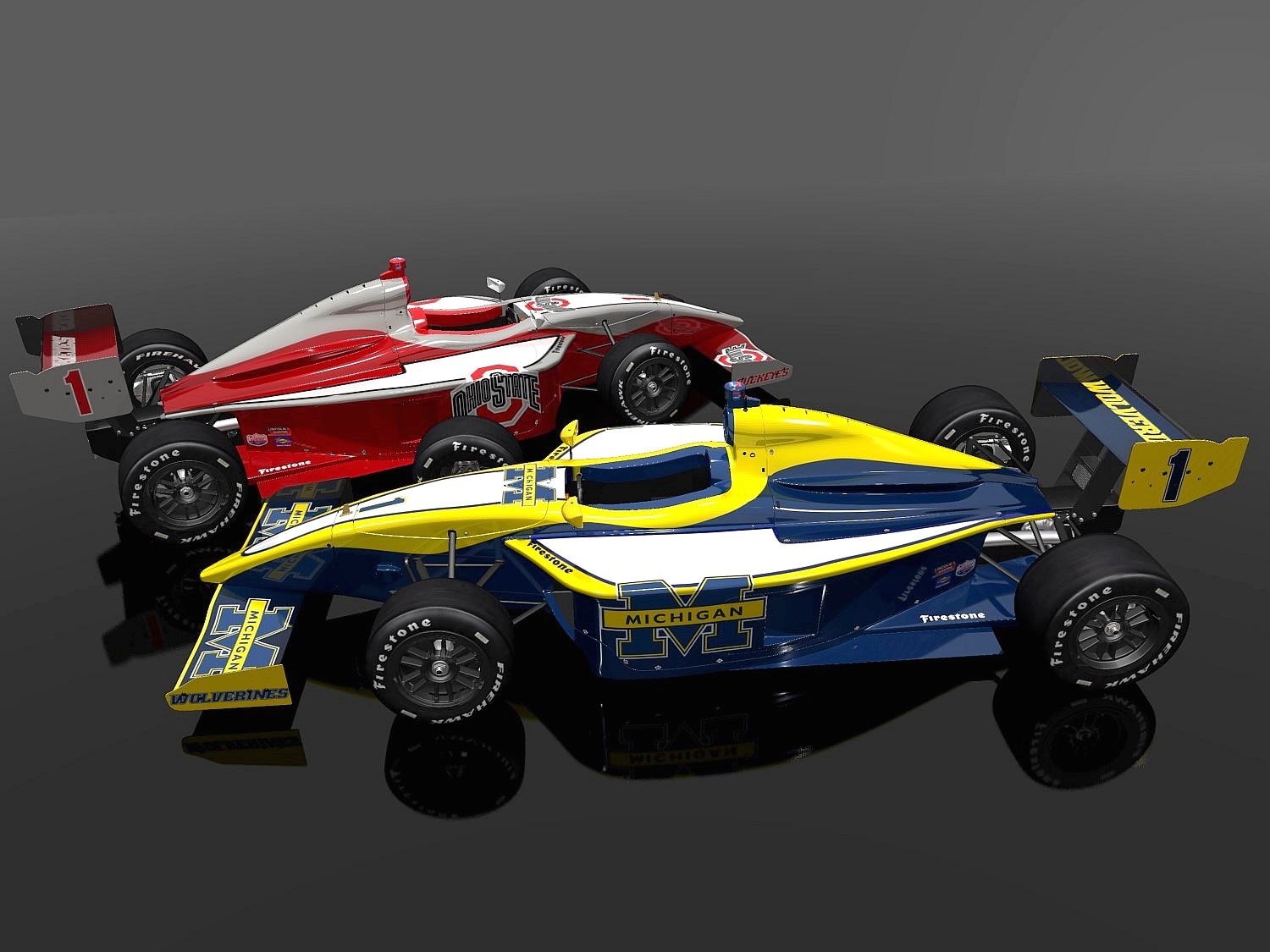Maybe there’s something to this ‘IndyCar U’ idea
 |
 |
| If IndyCar can connect with universities the potential benefits are huge |
Well, if I'm ever having trouble coming up with a creative April Fools' Day joke, I now know exactly what to do: formulate an innovative idea, call it breaking news, and suggest the idea's brilliance originated was the work of IndyCar. If only, I could ever figure out how to leak said joke in advance€¦.
All kidding aside, AutoRacing1.com caused something of a stir last week with an "exclusive" April Fools' Day column advocating a "university tie-in," concept for IndyCar and Indy Lights. While the column was of course, a joke, the idea presented was a rather intriguing one, which garnered a fair amount of discussion. Predictably, some loved the concept, whereas others dismissed it as preposterous.
And in fairness, the column spoke in somewhat general terms, leaving numerous questions unanswered. For example, considering the myriad of brooh-hah-hahs over the years regarding engine leases, could the series establish a reasonable procedure to determine which team would align with which university? It's very easy to imagine someone crying bloody murder, if Roger Penske seeking the "unfair advantage," somehow aligned his team with the university boasting the best engineers.
Further, how would students be selected to participate in the program? Could you enroll for IndyCar 101, as you would say English Literature, Psychology or Economics? While I'm all for introducing IndyCar engaging a broader audience, having the audience build race cars seems at least on the surface, a little drastic. After all, racing cars are highly technical machines designed by professional engineers with years of experience, not college students looking to fill semester hours.
Now, is my thinking that such an endeavor would be "academic," in nature, presumptuous? Or because it is a competitive endeavor would a university's connection to racing qualify as an intercollegiate sport and thus fall under the watch of the utterly incompetent NCAA? If so, would the NCAA impose sanctions if say, a Star Mazda driver swapped victory trophies for tattoos?
Speaking of drivers, how would they be selected? Would drivers have to attend Ohio State, Michigan, Notre Dame or Purdue to participate? Would said drivers compete in entirely separate classes, as the column indicted or alongside other professional drivers? And would fans be upset if universities constantly had "ride-buyers," filling their seats?
Perhaps, the most interesting question would be, who exactly is going to pay for such an endeavor? Certainly many of us are very wise when it comes to spending other people's money. Further, I'm not sure I see the direct incentive for the universities, nor do I see how they would necessarily recoup an adequate return on their investment. At the very least, I can't imagine "let's talk about going racing," has been on the agenda for many university board meetings in recent years.
In short, AR1's proposal was not, nor did it intend to be comprehensive. Further, it does raise numerous questions that at this point have no definitive answer. Now, I'm not going to say the details of costs, university/team assignment, or arguing what students should and should not design are trivial. However, I will say that outright dismissing the idea over such matters, greatly misses the point, and overlooks the limitless opportunity this proposal offers.
See, the proposal to have universities involved in the design of Indy cars is all about introducing IndyCar to a larger audience, engaging another constituent, which so happens to be a younger constituent at that. Further, as we have witnessed in other sports, colleges boast the added benefit of already-built-in followings.
Remember, Indy car racing, in its various forms, has spent decades trying to reach a broader audience. How often do you hear, "the racing is great," or "IndyCar drivers are more friendly and engaging that other pro athletes"? While those of us that follow the sport closely understand this, television ratings and other metrics show the message is not reaching a broader audience. For whatever reason, our beloved sport has not expanded beyond its passionate niche following, an aging niche at that. Sadly, IndyCar is significantly disconnected from the public at large.
Well, I can tell you something that many people feel incredibly connected to: their alma maters.
Yes, IndyCar tying itself to universities creates an opportunity, albeit an indirect one, to reach a broader audience. While there are numerous such examples, let's use one university from last week's article, Ohio State (great livery on the OSU Dallara by the way).

Say Ohio St. is producing aero-kits for Indy Lights, and has an affiliation with a two-car team in the series. The cars have some sponsorship, but are generally speaking outfitted in Buckeye scarlet and gray. And heck, maybe there would even be an opportunity for Ohio St. sponsors say, Nike, to sponsor a car, but I digress.
Now, randomly select any American IndyCar venue, and I will guarantee there is a local Ohio State alumni chapter. Ditto for other major universities. But keeping with Ohio St., I'll bet that formally, or informally, an OSU group gathers for football games, basketball games, and other Buckeye events, somewhere near every American IndyCar venue.
And let's say a Buckeye-alum in Baltimore thought about buying a ticket the year before but passed. Maybe, he was too busy. Maybe, he felt no real connection to the event.
However, the next year he sees Ohio State will be fielding two cars in the Indy Lights race. Further, he sees that the local Buckeye alumni chapter will have a tent at the race supporting the scarlet and gray cars. All of a sudden, that Buckeye alum, who was previously undecided, now has a reason to go. He will join fellow Buckeye alums, in rooting on the Scarlet and gray. And if you get that person through the gate, you open up all sorts of possibilities.
Maybe, he hears the group is gathering next summer in Pocono, about a three-hour drive from his home, and is compelled to go. Maybe, at one point during the weekend he meets Ryan Hunter-Reay, Will Power, or Helio Castroneves and becomes a fan, who buys an RHR, Power, or Castroneves hat. Maybe, during that Baltimore weekend, he learns that the series will be competing again in five weeks on NBC Sports (well, that's another matter.)
[adinserter name="GOOGLE AD"]Still, the point remains: The university tie-in gives IndyCar a unique opportunity to engage another constituent. It builds off a connection already in place to potentially get others interested in the sport. And while there will be many who will flock to the track simply for the beer, the pretty girls, and the opportunity to see some old pals with the backdrop of a unique spectacle, there are those who will become die-hards. At the very least, IndyCar is giving itself the opportunity to connect to a broader audience.
And there's more.
Take the Ohio State example, and then think about Michigan, Purdue, Notre Dame, Indiana, UCLA, Texas, Alabama and numerous others universities. Now, think about the possibility of Ohio State and Michigan cars battling at Mid-Ohio or Detroit. Imagine Cal-Berkeley battling Stanford at Sonoma. What about Johns Hopkins battling Maryland in Baltimore's Inner Harbor? Consider the frenzy you might create if an Alabama car battled an Auburn car wheel-to-wheel in the closing laps at Barber. And how cool would it be for a driver or crewman to wear a Bear Bryant pattern-styled hat?
When people visit Ohio State, Michigan, Stanford, or Alabama, they may see a Lights or Star Mazda car showcased in Columbus, Ann Arbor, Palo Alto and Tuscaloosa. In other words, if this idea were to take off in such a way, IndyCar will have created a platform, in which, its product is showcased, for free.
In short, AR1's proposal to connect IndyCar to universities, offers countless, immeasurable ways to broaden IndyCar's scope and reach.
Of course, it must be said that the above talk is by and large, hypothetical. And as mentioned earlier, there would be significant issues to address, and this is not a matter of get Ohio State and Michigan to paint a car, send a few engineering students over and go racing.
Rather, this is an incredibly complex matter that deals with issues of safety, finances, the details of amateur/professional status, and so on. Further, such an endeavor would have to be done in a way that is beneficial to both parties.
But this can be beneficial to both parties. For IndyCar, the potential to engage not one constituent, but many constituents with already passionate followings, is clearly there. Simply put, such a scenario makes for countless potential ticket-buyers, countless new fans. And when you consider the limitless possibilities of the idea, it becomes downright foolish to dismiss.
